How to Plant Fall Crops in the Heat of the Summer
If you plan to grow a fall garden this year and if you live in a hot climate like I do, you know that sometimes it can be tricky to get your cool season loving crops planted at the right time.
The challenge is this: fall crops enjoy cool weather, but in order for them to mature before winter, they need to be planted in late summer. This is also often the hottest part of the year.
Whether you are transplanting or direct seeding crops into the ground, it can be tricky to get them to thrive while the mercury approaches the century mark. Sometimes you can end up with dead plants or no plants at all (ask me how I know).
But, all is not lost. There are ways to help your seedlings through the heat so they will provide an abundant harvest in the fall. Let’s discuss how to get those cool season crops off to a good start.
Before you start planting out your crops for the fall, you need to know what crops can be directly seeded into your garden and which ones need to be started indoors ahead of time or purchased as transplants from a nursery or garden center.
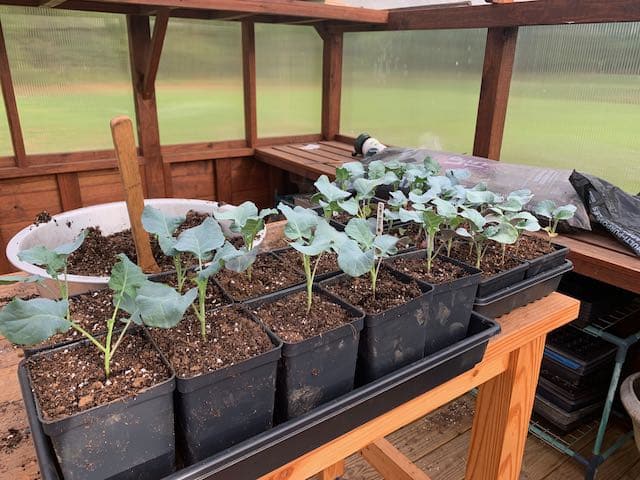
Transplants
Some fall crops need extra time to grow on inside before it is time to plant them out. The crops that take too long to plant from seed and get a harvest before winter (in most climates) are broccoli, cabbage, cauliflower, Brussels sprouts, and celery.
Other crops can be grown from seed in the garden, but the heat of the garden soil may inhibit adequate germination. Lettuce and spinach seeds won’t germinate in the hot soil so you could start them inside and transplant them out at the proper time (or purchase transplants at a garden center).
Finally, there are crops that can be transplanted or directly sown in the garden, but you might want the ease of purchasing transplants at the garden center. Examples of these are kale, collard greens, and mustard greens.
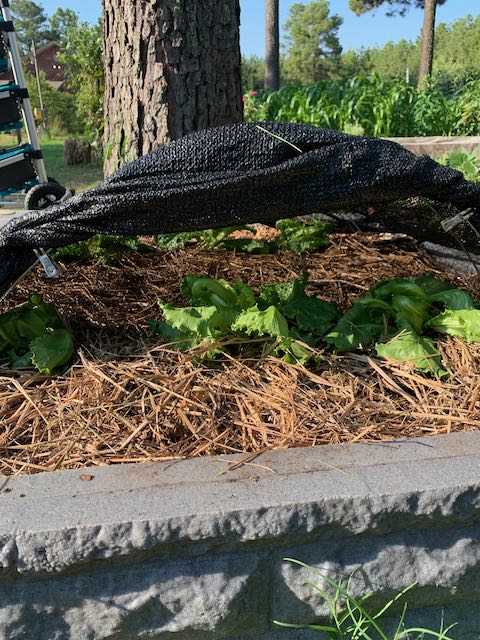
How, then, do you ensure that when it’s time to plant these transplants into the garden that they will not wilt and die in the heat?
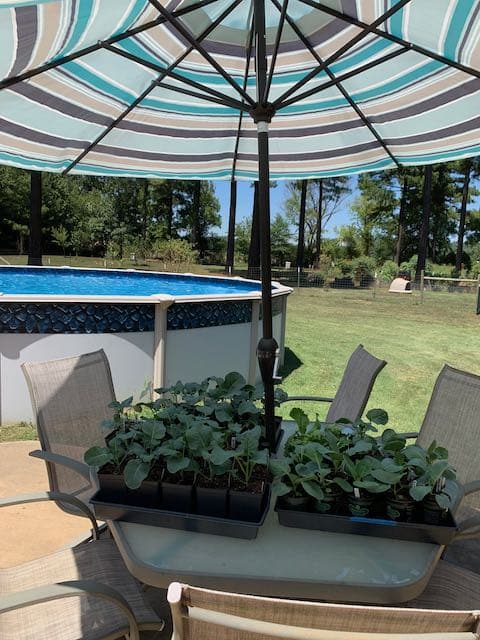
Steps to Success
- Harden them off properly (start with just a short amount of time per day — optimally in the morning — then increase the time each day)
- Check your forecast and try to plant during a cool front (below 90F). Cloudy days or even light rain forecasted after you plant are ideal.
- Plant in the late afternoon and evening so the plants have a chance to get settled before the heat of the day comes.
- Pre-irrigate the soil if it’s dry.
- Use Organic Rev at transplant (use my code ‘JILL10’ for 10% off your order), which will help buffer heat stress and promote vigorous root development. (Affiliate link)
- Have supplies ready for insect netting and/or shade cloth. (The ones I use are on my Amazon favorites list here.)
- Water well, but don’t overwater.
- Mulch to retain moisture, prevent evaporative stress, and moderate soil temperature.
- Add shade cloth, but do NOT restrict airflow; leave open areas for wind to pass through.
- Start weaning them off shade cloth after a week or so they can grow in full sun.
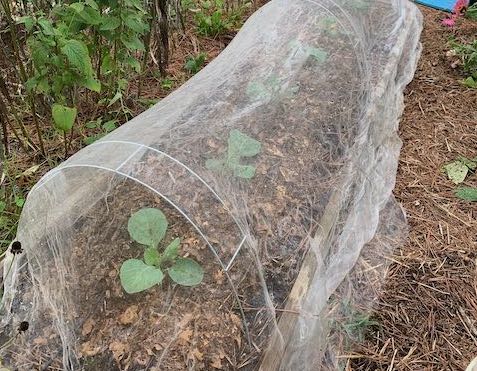
Direct Sown Crops
Many fall crops can be directly sown as seeds in the garden. Some don’t like to be transplanted, such as carrots, but others they are just easy to direct sow, like greens. How, then, do you have success with these crops, getting them to germinate and grow successfully in the heat?
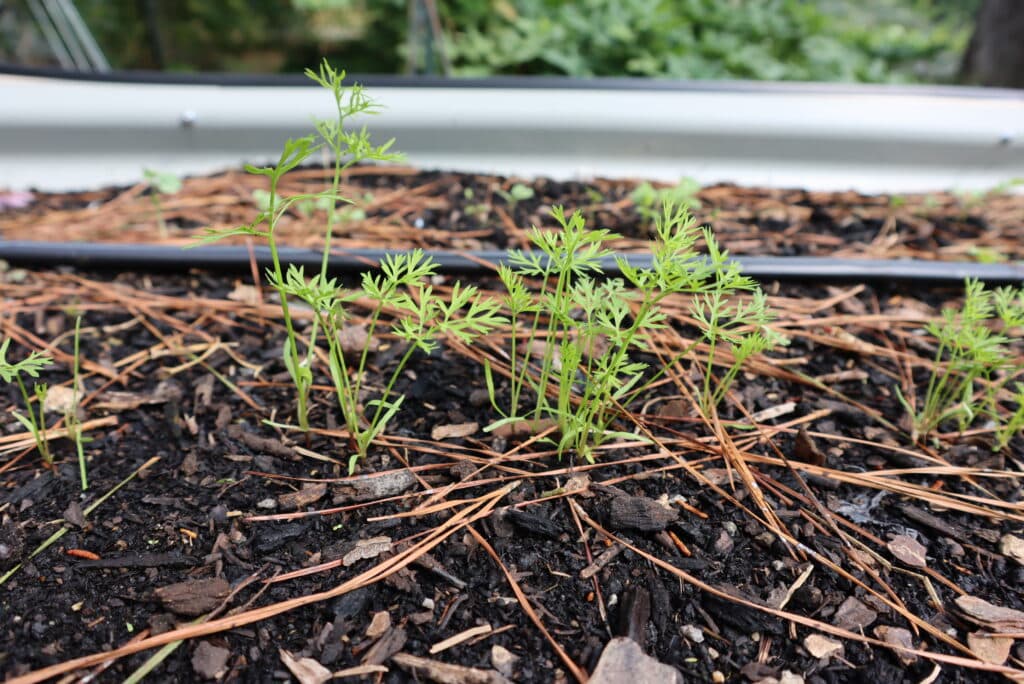
Steps to Success
- Pre-irrigate the soil if dry.
- Push mulch to the side so seeds can easily germinate and push through the soil.
- Plant a little deeper so the soil will retain a little more moisture at the root zone.
- Cover & irrigate daily in dry periods, until germination (especially helpful for carrots but not as necessary for other crops).
- Mulch when seedlings are a few inches high.
- Consider shade cloth temporarily; consider insect netting for crops susceptible to pests and critters.
- Be mindful of soil temperature. Lettuce and spinach will not germinate at a good rate when soil temperature at the seed depth is over 75F.
- Try planting under the cover of a summer crop.
- Expect sprouting in most cases within a week if not just a few days due to planting in warm soil.
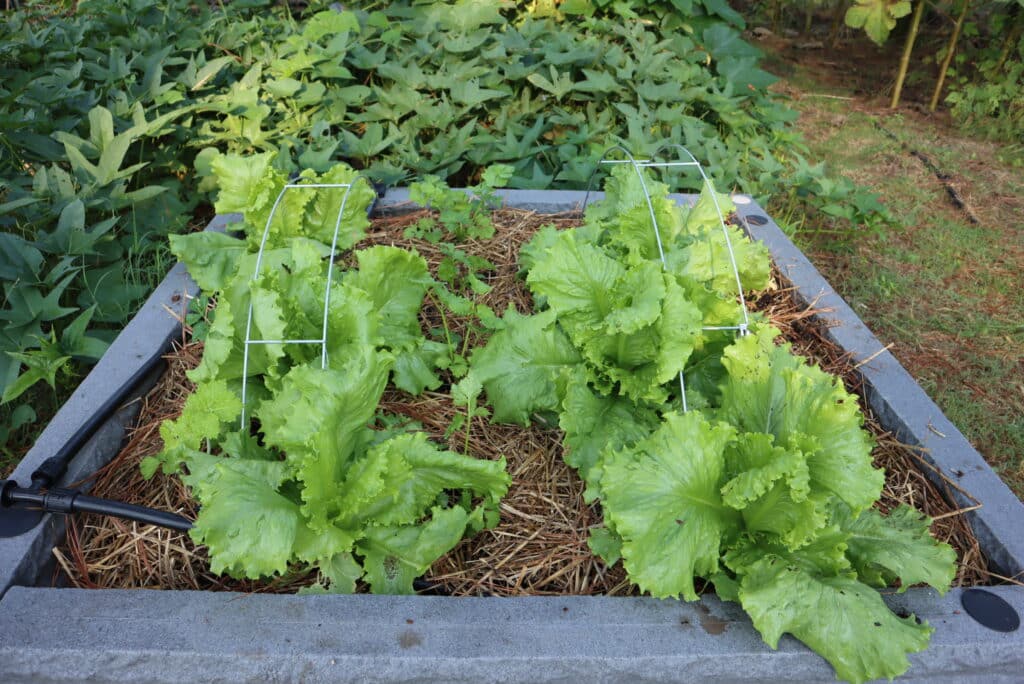
Following these steps can help to ensure you have a great harvest by getting these cool season crops off to a great start in the fall — even while it still feels like summer.
In this post, we talked about how to get your fall crops started, but if you want to know when to plant, how to amend your soil ahead of a fall planting, and how to extend your season even longer, you may be interested in my Fall Garden Workshop here.
Garlic Planting Cheat Sheet

Garlic is the easiest and most rewarding plant you can grow! All you have to know is some basics:
- WHEN to plant
- WHAT KIND to plant
- WHERE to purchase
- WHERE NOT to purchase
- The simplest WAY to plant, whether you have a raised bed, a plot of land, or container. This step is SUPER EASY!
Enter your e-mail address, and I'll send you the cheat sheet immediately!
Plus, I'll send you my "In the Garden E-mail" on Fridays, periodic updates on garden resources relevant to you, and get access to my entire bank of free garden downloads!
You are also agreeing to our privacy policy.

